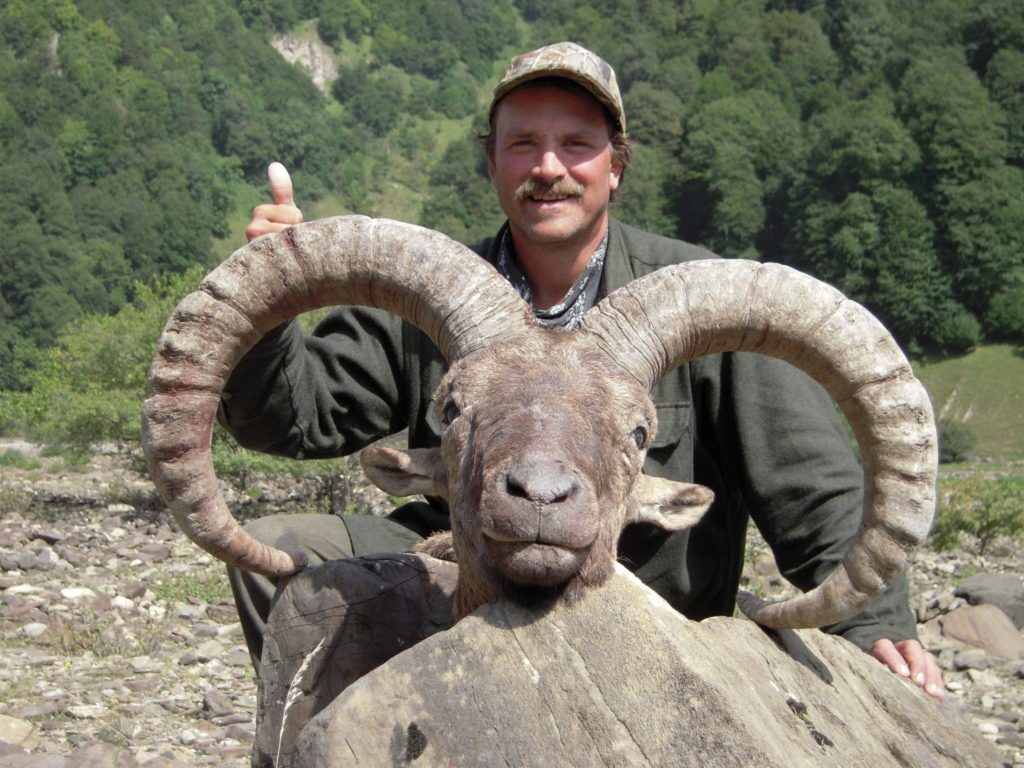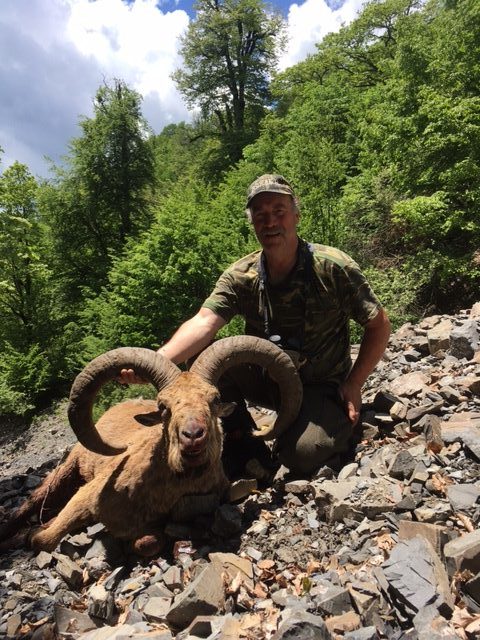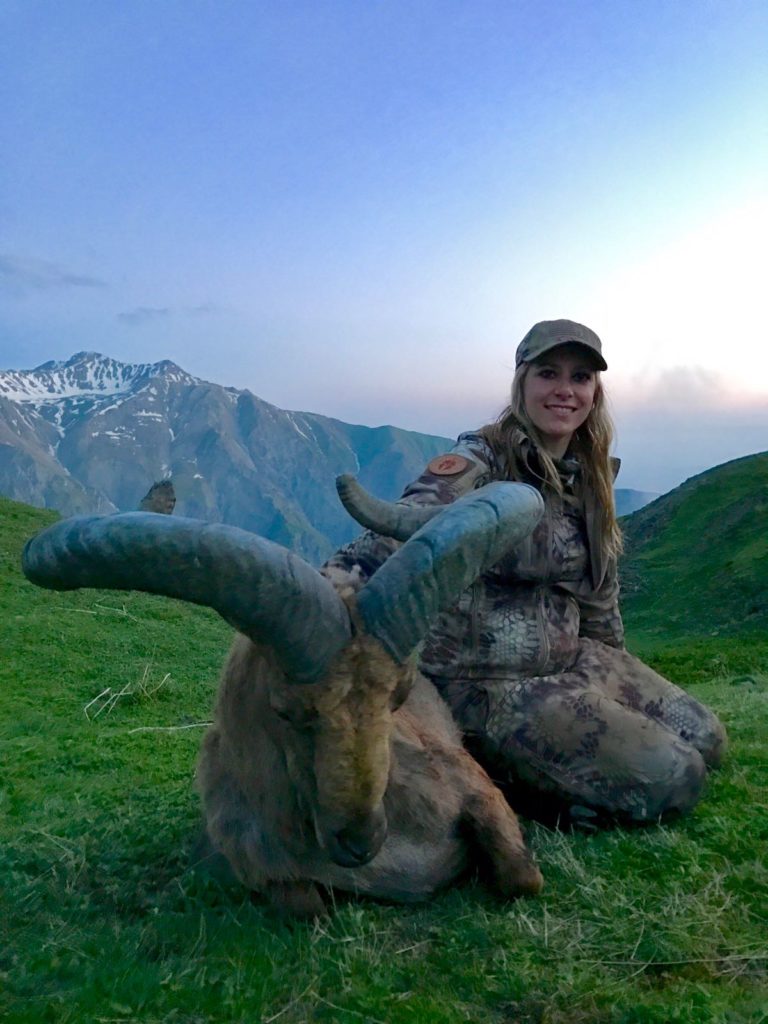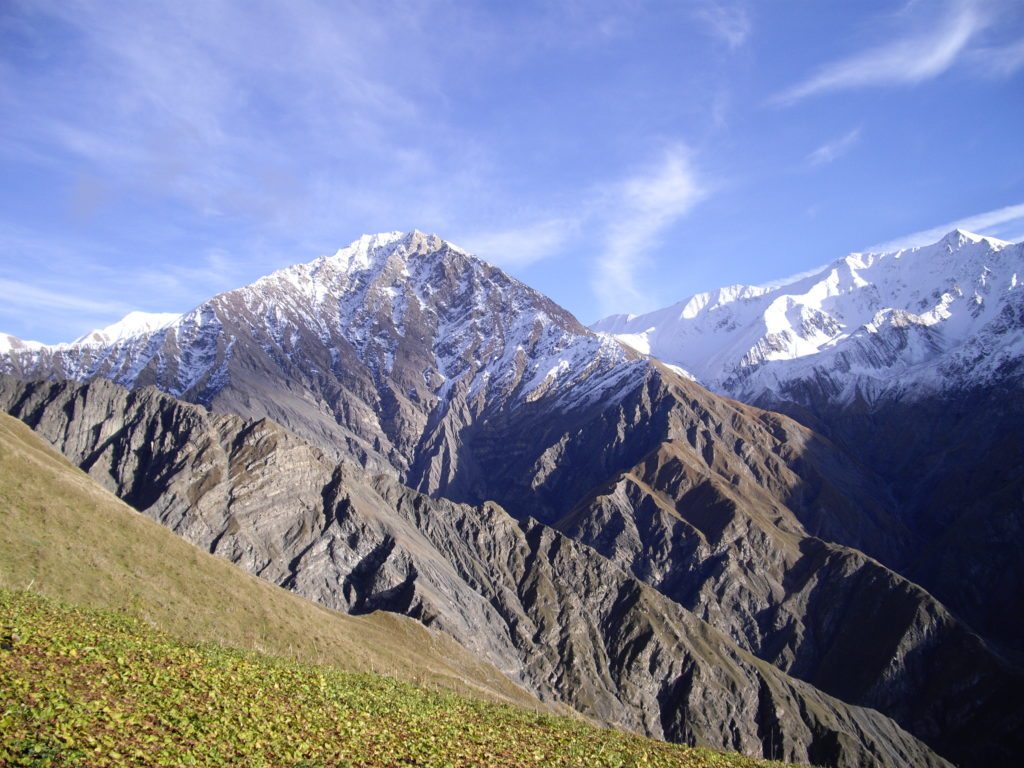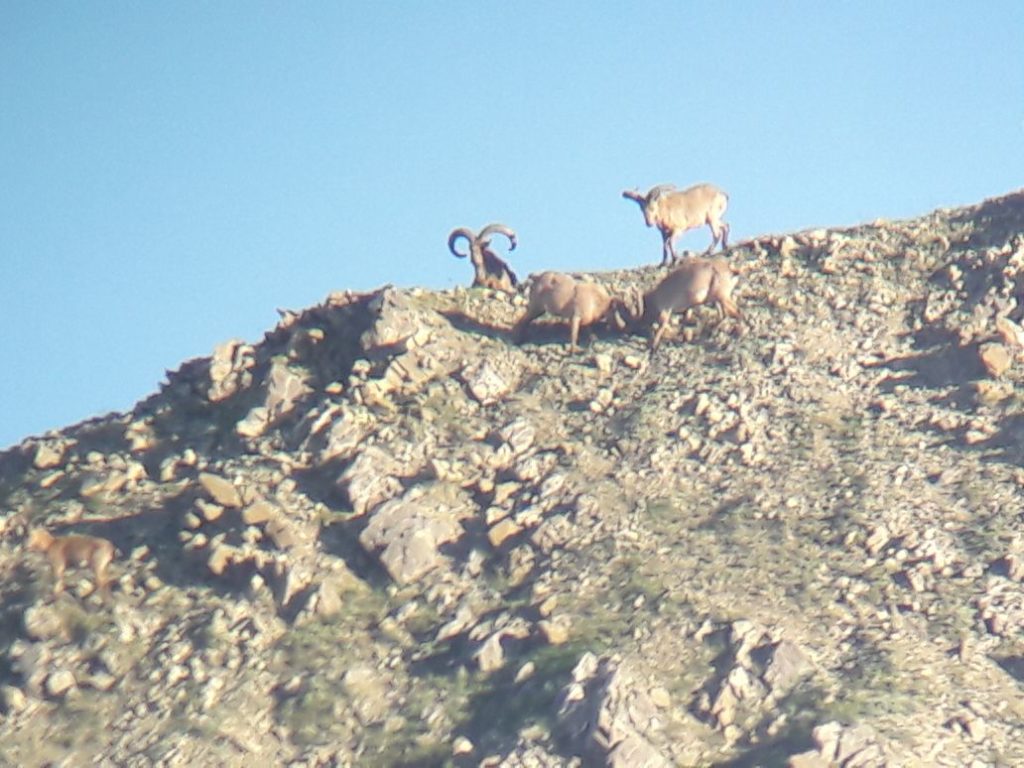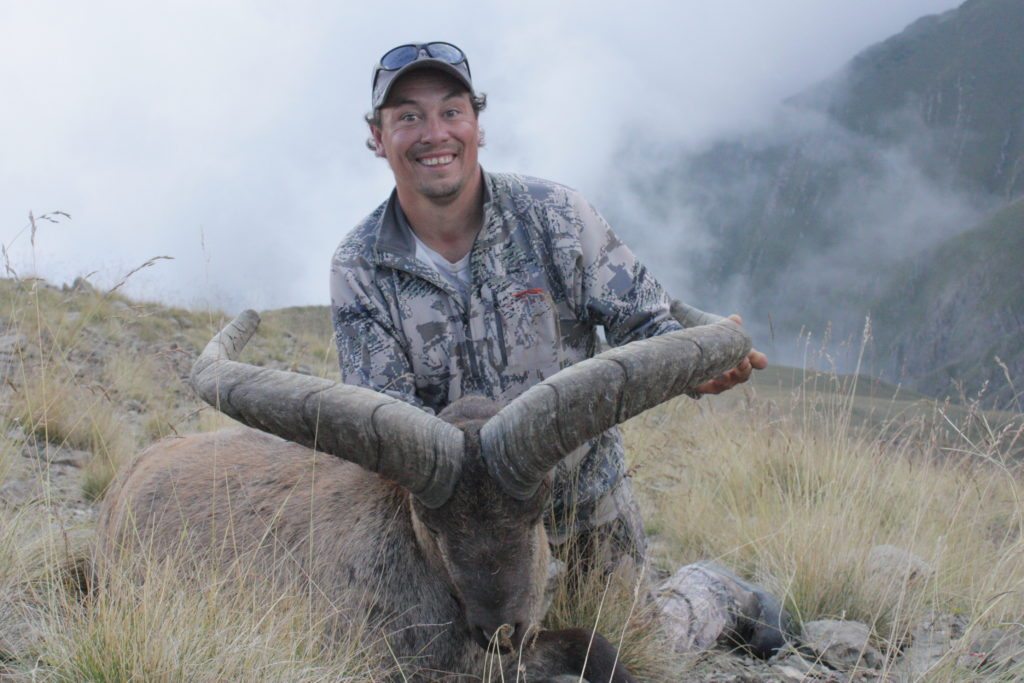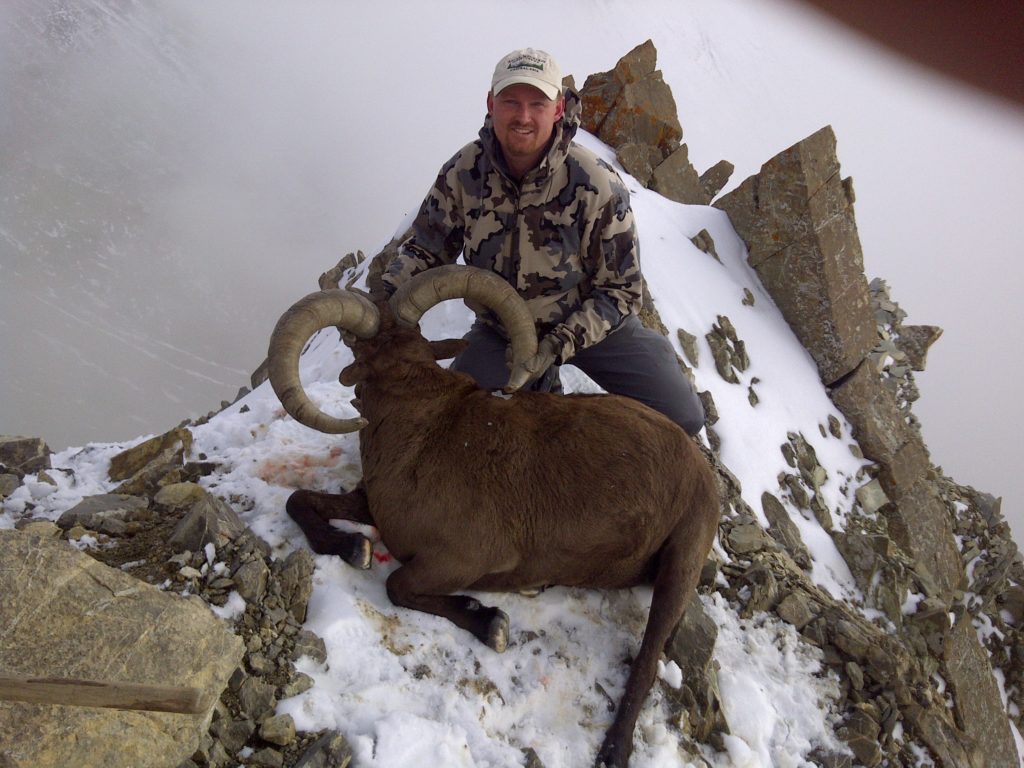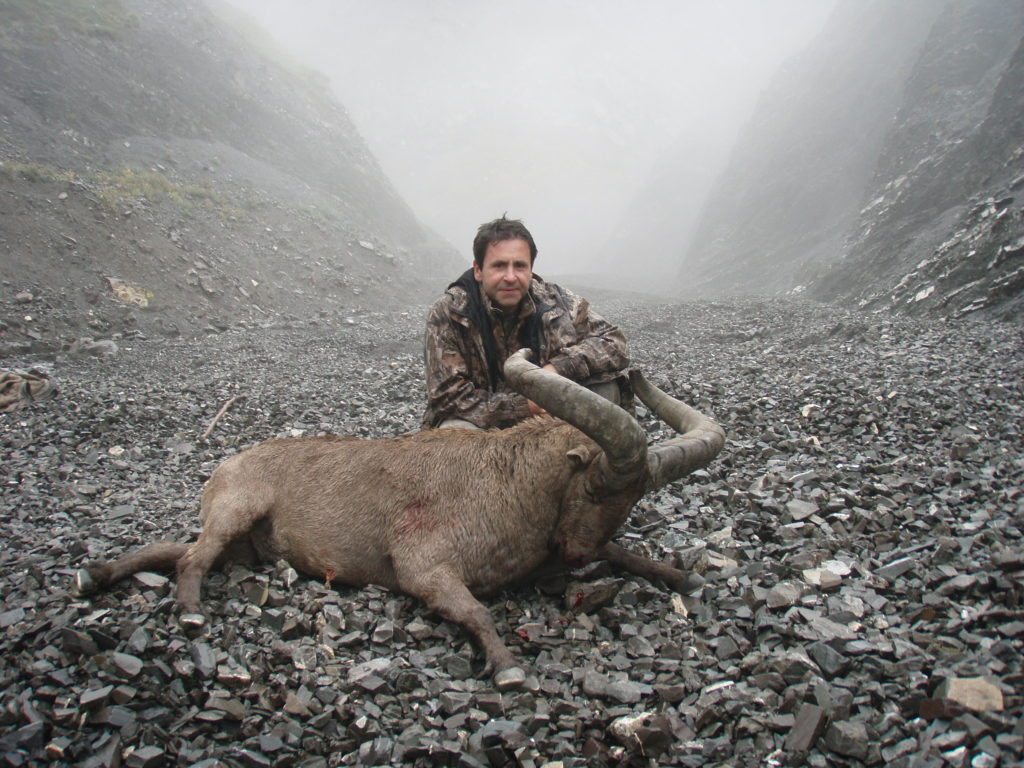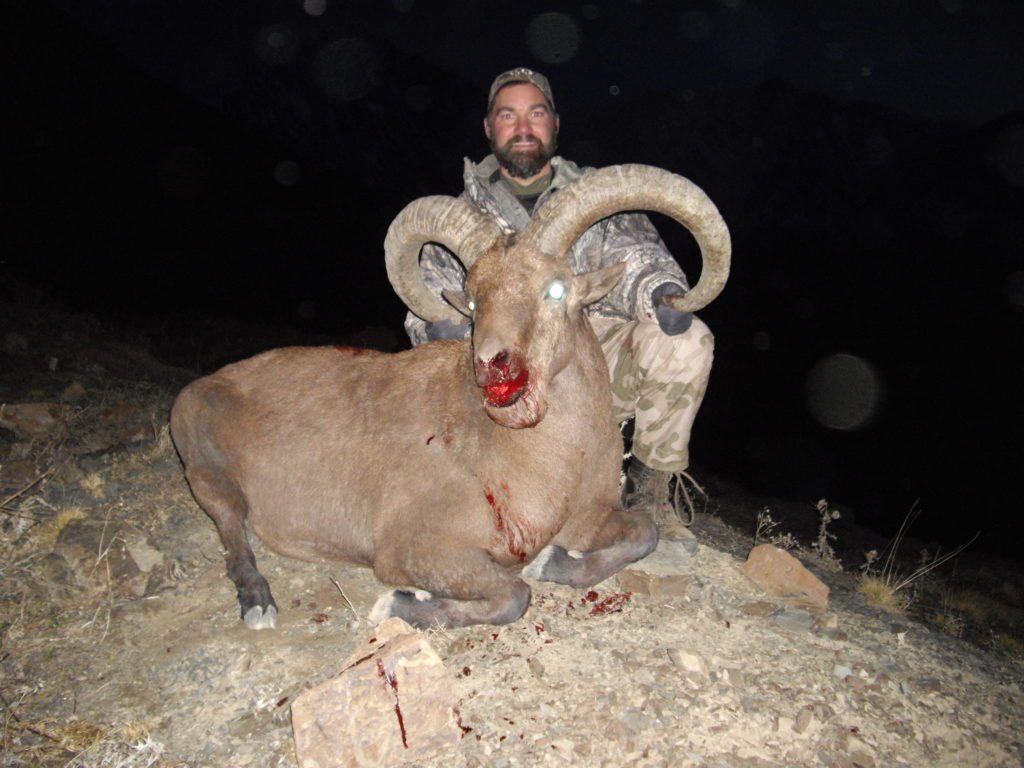Dagestan (Eastern) Tur Hunting in Azerbaijan
Azerbaijan is the exclusive destination for Dagestan Tur. You will be hunting in the Sheki, Ismaily and Guba regions. You can expect to find billies from 26-39″, with the biggest billies being found by way of spot and stalk.
Azerbaijan is a former member of the Soviet Union which gained its independence in 1991. It is a small nation, slightly smaller than the state of Maine. When you go on your Dagestan Tur hunt you will fly into the capital city of Baku (via Istanbul or Frankfurt) which is located on the Apsheron Peninsula. You won’t see the mountainous landscape of the country til you leave the Peninsula.
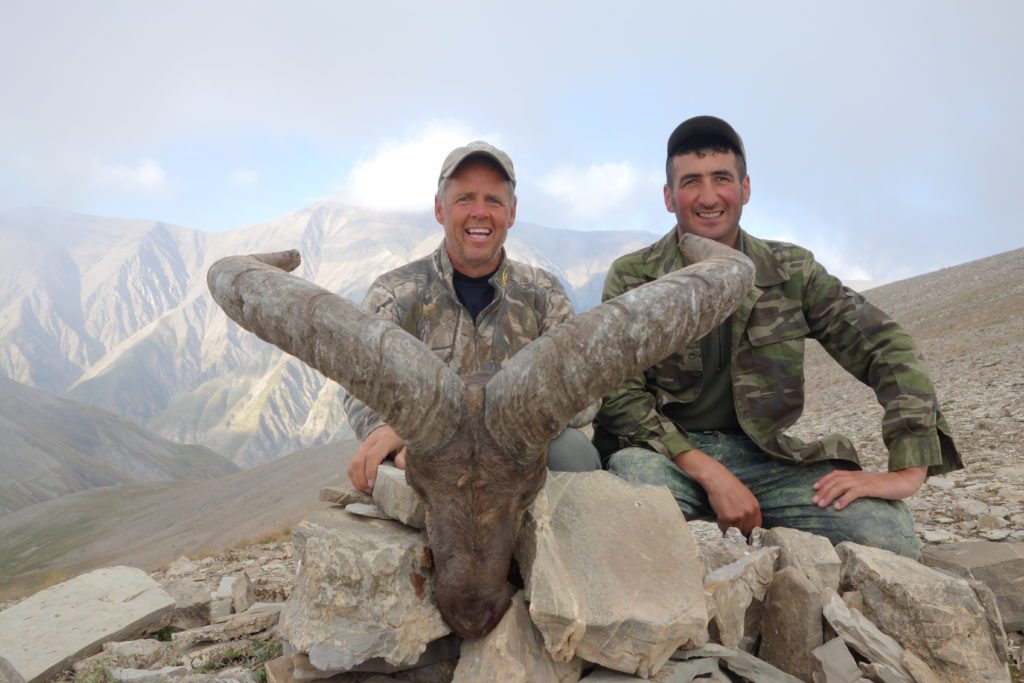
Recommendation
We highly recommend that you consider adding a Kyrgyzstan Ibex or Marco Polo on to your Tur hunt as there is little additional travel required and you can get the most out of your trip.
Tur Hunting Season
The hunting season starts on June 1st and lasts thru December 15th. While July and August are the best months for stalk hunting, the hide is better in October, November and December months.
Your Dagestan Tur Hunt
For your Dagestan Tur hunt we only work with the same long time and experienced guide/interpreter who works with all 3 local outfitters. The outfitters will provide the local guides, assistants, cooks, vehicles, horses, camps, food, lodging and interpreter (one per camp). They acquire your local licenses/tags/permits for the hunt, and they are politically well connected.
For an additional fee we can arrange for an English Speaking, American or Canadian Manager/Guide in the Hunting Camp to make sure your needs and questions are being met.
We can also arrange to have an experienced sheep guide (all have been involved with many successful high-altitude hunts) accompany you in addition to the local guides. This service is unique for this type of hunt, but is not generally necessary for Tur, as the local guides are very good.
Most other operations just set up the hunt with the local outfitters and only stay in camp; they don’t actually accompany you and almost never help guide on Asian hunts. This service is especially helpful if you wish to harvest a very large animal, want help with the trophy judging and shooting process, especially if it is your first time to Asia, as many of the local guides do not speak English.
The hunt is conducted at 7500-9000 feet (2500-3100) altitude, which is why very few to none suffer from altitude sickness. This, however, is not to imply that good physical condition is not a prerequisite to successful Tur hunt.
The Caucasian mountains are famous for being some of the steepest and most dangerous around. You’ll find yourself climbing nearly vertical rock. Climbing up and down such steep slopes is the main challenge of this truly adventurous mountain goat hunt.
Local guides use wooden sticks for climbing. They use them for support while constantly shifting weight for balance and are quite apt. We recommend using those instead of climbing sticks.
Instead of walking straight up, try climbing in zig-zag trails. This will put less pressure on your feet and ankles, and you won’t get tired as fast.
In summer, temperatures will vary between +15 to +30 Celsius, with frequently cold and rainy nights. You’ll need a good mat and sleeping bag to keep warm and dry, as for summer hunts you will stay at fly camps for the entire duration of hunt. Humidity is high, so make sure you have enough changes of underwear. Winters are mild with +10 to -5 Celsius at the lowest.
Horseback hunting is possible only in summer and only in certain hunting areas, where there are horse trails. There is practically no difference between horseback hunting and foot hunting. As hunting areas are at a considerable distance from the base camp, hunters can ride on horseback to hunting areas that horses can access. Horseback hunting is especially welcome for those who lack good physical condition and are not able to hike for long distances.
For better trophy opportunities hunters will have to proceed on foot as you’ll be able to find bigger herds consisting of 100-150 goats in the highlands of the eastern Greater Caucasus, which you can only reach by foot.
On average, you’ll observe several herds of 20-30 goats a day. Animals are generally not spooked, which is why you’ll often find them grazing close by.
Stalking is the general hunting method, although driven hunts are used as well.
Trophy Quality
Specimens of 100-120kg with 1 meter wide (39”) horns are not uncommon in the Shekeri, Ismailly and Guba regions.
- Success Rates
- 26-32” – 95%,
- 33- 35” – 60%,
- 35”+ – 30%.
Sample Itinerary
- Day 1 – arrive in Baku and overnight
- Day 2 – drive to base camp (6-8hrs)
- Day 3-7 hunt for Dagestan Tur
- Day 8 – drive back to Baku
- Day 9 – depart for home
Hunt Details
- Season – July 1 through November 1
- Duration – 7 day tip with 5 days of hunting
- Prices
- 1 hunter – $11,500
- 2 hunters – $11,000 per hunter
- 3 hunters – $10,500 per hunter
- 4 hunters – $9,500 per hunter
- Additional Hunting Days – $350-$400 per day
- Additional Species – 2nd Tur $4500 (cash upon harvest)
- Non-hunter – $2,500
- Refund – If you don’t get a shot opportunity less than 350 yards on representative animal outfitter will refund $2,000
- Other Hunt Options – Bear, wild boar, wolf, reed cat and jackal
- Additional U.S. or Canadian Guide – price depends on length of trip.
Hunt Costs Include
- Travel and permit arrangements
- Firearm permit
- Hunting license and tags
- Vet Certificate
- English Speaking Interpreter
- Area fees and taxes
- Local guide and assistant per hunter
- Food and lodging during the hunt
- Airport pickup
- VIP transfer through Baku Airport
- Trophy Prep
- Transportation during the hunt
Additional Costs
- Flight from U.S. to Baku ($1500-$2500)
- Hotel and Food in Baku before/after hnt ($100-$200 per day)
- Azerbaijan Visa (approx $150) must apply at least 1 month prior to hunt date
- Global Rescue Insurance ($200-$300)
- Tips and Gratuities – (approx 10% of hunt cost)
- Travel or Sportsman’s Insurance
- Skull/skin drying for taking trophy home on plane ($50)
